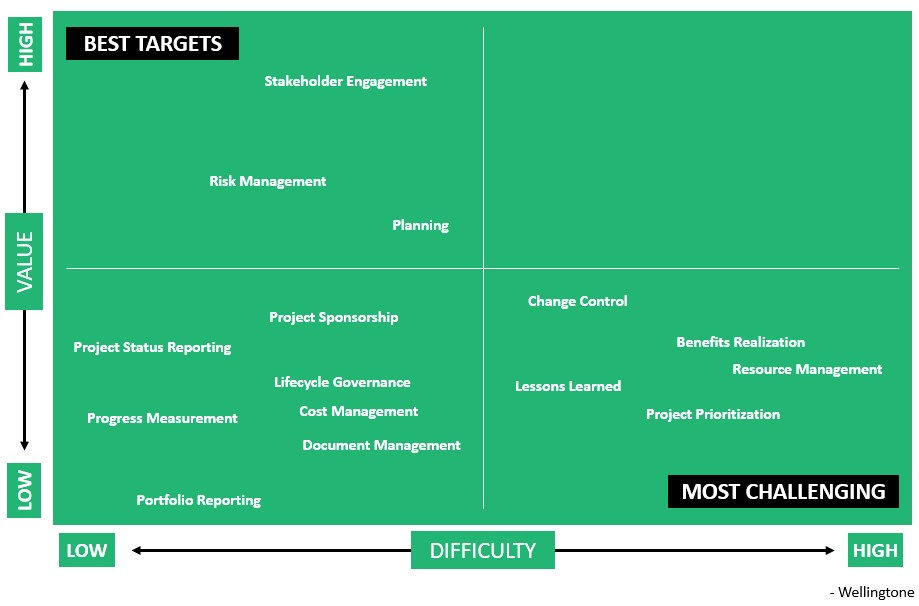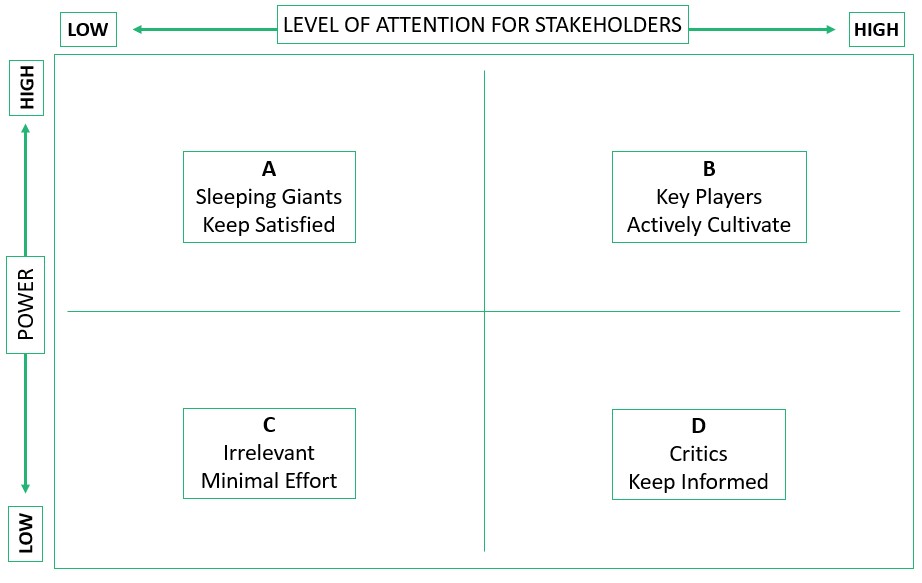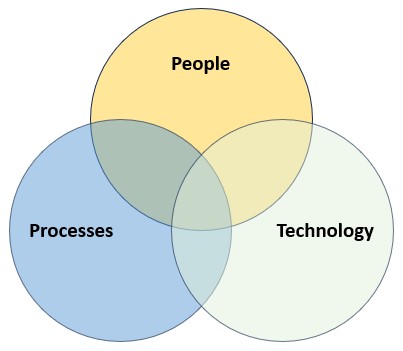
Imagine a scenario where a large-scale project goes awry due to mismanagement and neglect of crucial stakeholder feedback. The project's stakeholders, who held genuine concerns and valuable insights, were pushed aside in the name of expediency. The consequences? Cost overruns, missed deadlines, and ultimately, project failure. This hypothetical scenario sheds light on a recurring problem in project management: the disregard for the role of stakeholders in project management and their input.
In the fast-paced world of project management, keeping abreast of the stakeholder's project feedback can be an overwhelming task. The pressure to deliver results on time and within budget can sometimes overshadow the importance of project stakeholder engagement. When your stakeholder feedback examples are sidelined or ignored, the very foundation of your project feedback system becomes shaky, leading to disastrous outcomes.
Why Are Stakeholders Important?

The Wellingtone’s State of Project Management 2021 report maps the various project portfolio management processes based on the value they deliver against the challenges project managers face embedding them into the respective projects. Stakeholder engagement has the highest value in PPM.
Before delving into the consequences of neglecting stakeholder feedback, let us understand stakeholder importance in project management.
Who Is a Project Stakeholder?
The stakeholder can be a single or group of individuals or institutions that have a vested interest in the project's success and are directly or indirectly affected by its outcomes. They can be project sponsors, team members, customers, regulatory bodies, or even the community at large.
Stakeholders' feedback plays a crucial role in shaping a project's direction. These stakeholder feedback examples can provide you with valuable project insights, offer diverse perspectives, and help in identifying potential risks and opportunities. In short, project stakeholders are like guiding stars that can help a project navigate through rough waters and reach its destination successfully through timely feedback on projects.
The Continuous Feedback Loop: A Missed Opportunity
Project management is not a one-time endeavor; it is an ongoing process that requires your constant adjustments and improvements. One key tool to ensure smooth progress is a continuous project management feedback loop, where stakeholders review is solicited at various stages of the project.
When managers apply the continuous feedback loop effectively, they create an environment of collaboration and trust. This leads to increased stakeholder satisfaction, better alignment of project goals with stakeholders' expectations, and a higher chance of project success. However, not all project management offices prioritize this crucial aspect, leading to severe consequences.
Consequences of Ignoring Stakeholder Feedback
- Cost Overruns and Budget Deviation
A study by the Rebel's Guide to Project Management reveals that 16.13% of project managers were seriously concerned about budget overruns. Furthermore, 28% of projects fail due to inaccurate cost estimates, per a Business 2 Community 2022 study. Ignoring stakeholder feedback can lead to costly mistakes that result in the project veering off course, overshooting the allocated budget, and causing financial strain on the organization. - Missed Deadlines and Delays
Time is of the essence in any project. Without timely feedback from stakeholders, it becomes challenging to identify potential roadblocks and mitigate risks. This lack of foresight can cause delays in project timelines, leading to missed deadlines and unhappy stakeholders. - Inadequate Risk Assessment
Stakeholders bring unique insights to the table, enabling project managers to identify and address potential risks. Ignoring their feedback hampers the project's ability to anticipate and mitigate risks effectively, leaving the project vulnerable to unforeseen challenges. Per a Business 2 Community study, 26% of project failures occur due to inadequate stakeholder support. - Dissatisfied Stakeholders
Ignoring stakeholders' feedback can lead to a breakdown in communication and trust. Dissatisfied stakeholders may withdraw their support, leading to reduced collaboration and support throughout the project's lifecycle. According to Geneca research, 75% of the respondents admit their projects failed because project stakeholders did not have confidence from the start. - Reduced Project Quality
Stakeholders' feedback often helps improve project quality. Ignoring such feedback can result in subpar deliverables that fail to meet your stakeholders' expectations and, in turn, tarnish the project's reputation.
How to Avoid Ignoring Stakeholder Feedback

- Identify and Prioritize Stakeholders
Understand why stakeholders are important and who are relevant to your project. Prioritize their feedback based on their level of influence and interest in the project's outcomes. - Establish Clear Communication Channels
Create open and transparent communication channels to encourage stakeholders to provide feedback without hesitation. - Actively Seek Feedback
Proactively seek feedback from your stakeholders at different project milestones. Use surveys, assessments, interviews, or focus groups to understand their concerns and expectations. Compile a set of questions to ask stakeholders for feedback.

The ‘Level of Attention for Stakeholders’ categorizes project stakeholders into four quadrants:
- The top two quadrants (Quadrants A and B) have stakeholders who are highly significant for the project’s success.
- While stakeholders in Quadrant A need minimal attention, they can be the silent partners that require reports at times.
- The key players, such as your customers, in Quadrant B must be kept in the loop actively.
- The Quadrant C represents people that are good-to-have stakeholders like team members not directly involved with the project.
- The project stakeholders in Quadrant D are the most difficult to appease. Ensure you have answers ready with facts and figures for their every query.
- Implement Feedback
Act upon the received feedback to improve the project's performance and address stakeholders' concerns. This is how you can gauge why stakeholders are important for project success. - Regularly Monitor Engagement
If you want to understand what a stakeholder is, keep monitoring their engagement and project performance. This ensures that their needs are continuously met and that their concerns are promptly addressed throughout the project lifecycle.
Conclusion
Ignoring stakeholder feedback in project management is akin to closing one's eyes and hoping for success. The consequences of neglecting stakeholders' concerns are far-reaching and can lead to project failure. By embracing stakeholder engagement and applying a continuous feedback loop, project offices can create an environment of collaboration, trust, and success. Stakeholders play a pivotal role in steering projects toward successful outcomes, and their importance cannot be overstated. Let us learn from the mistakes of the past and embrace stakeholder feedback as a guiding compass for future project endeavors.
TrueProject's cutting-edge predictive intelligence technology is helpful in obtaining timely input from project stakeholders. Its advanced platform allows for the seamless delivery of role-based surveys and assessments to all project stakeholders. TrueProject keeps you aware of team members' problems, expectations, and valuable feedback by proactively soliciting feedback from team members, clients, and other stakeholders. This real-time information exchange encourages a collaborative environment, allowing for quick and informed decision-making to address any emergent difficulties.
As a result, TrueProject enables your project teams to make appropriate adjustments, eliminate potential risks, and improve overall project performance, resulting in increased project success and stakeholder satisfaction.
More information on TrueProject at TrueProjectInsight.com

About the Author:
Dale Malcolm is the Director of Trueproject Customer Success with over 30 years of experience spanning software development, consulting, and business process re-engineering across multiple industries and countries. He has excelled in roles ranging from lead architect for data collection systems to database architect for telecom software, and has led various teams in implementing cost-effective and efficient IT solutions, including ERP and Enterprise Architecture practices.
- Do, Brend. “Why Nearly 7 in 10 Projects Fail, and How to Ensure Yours Succeed.” Upwork, May 12, 2022. https://www.upwork.com/resources/project-failure-and-success-tips
- Dribin, Laura. “People Management: Why Projects Big and Small Fail.” June 6, 2022. https://ceoworld.biz/2022/06/06/people-management-why-projects-big-and-small-fail/
- Harrin, Elizabeth. “Project Management Survey Results.” The Rebel’s Guide to Project Management, May 23, 2023. https://rebelsguidetopm.com/project-management-survey-results/
- Hendricks, Allison. “Top 5 common mistakes in managing stakeholders and how to avoid them.” Simply Stakeholders. https://simplystakeholders.com/top-5-common-mistakes-in-managing-stakeholders-and-how-to-avoid-them/
- Igbinoba, Bosa. “The Cost of Project Failure - People, Processes, and Technology.” Medium, August 11, 2022. https://bootcamp.uxdesign.cc/the-cost-of-project-failure-people-processes-and-technology-fe8473a1f34d
- ILX Group. “10 failed projects and the lessons learned.” August 19, 2019. https://www.ilxgroup.com/india/blog/failed-project-examples
- Pressbooks. “Managing and monitoring stakeholder engagement. in Project Management: Navigating the Complexity.” https://pressbooks.ulib.csuohio.edu/project-management-navigating-the-complexity/chapter/5-3-managing-and-monitoring-stakeholder-engagement/
- Brooke, Connor. “Project Management Statistics: 45 Stats You Can't ignore.” Business 2 Community, July 14, 2022.





